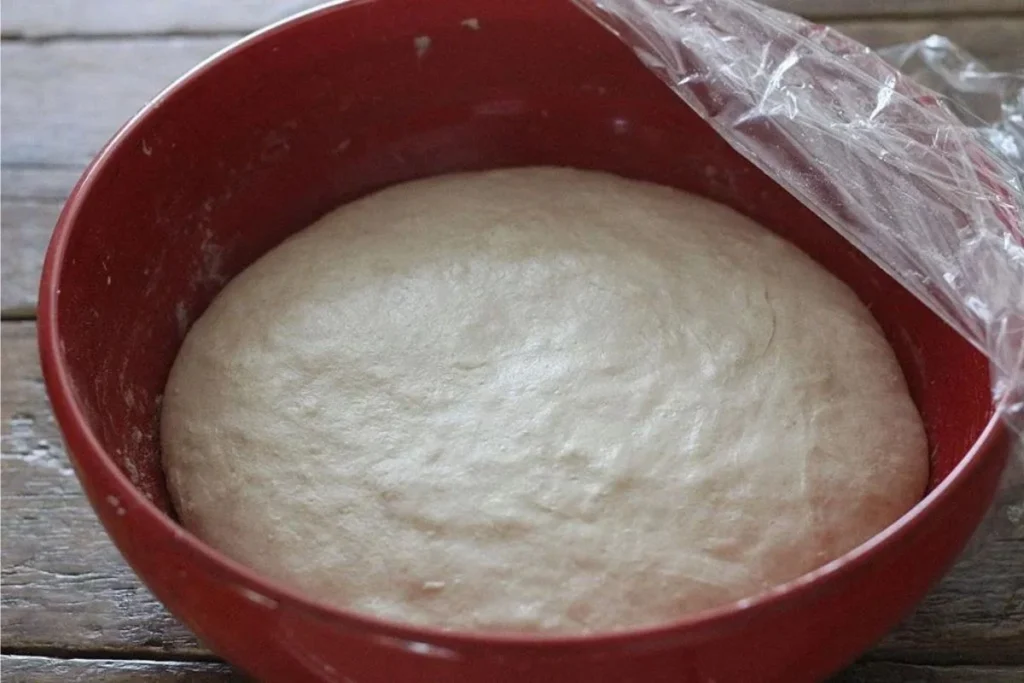How to Remove Macarons From Silicone Mat in 4 Effortless Ways
Baking macarons is a lot of fun, but things can get tricky when it comes to getting them off the silicone mat. Don’t worry! In this helpful guide, we’ll show you four easy ways to handle this sticky situation.
We’ll also explain why macarons stick to silicone mats and share some tips to prevent it. Enjoy the sweet experience without the hassle.
Table of Contents
ToggleWhy Are My Macarons Sticking To My Silicone Mat?
Dealing with the frustration of finding your carefully made macarons stuck to the silicone mat can be pretty disheartening. Understanding why this sticky situation happens is key to tackling the challenge and ensuring your baking experience goes smoothly.
Not Enough Resting Time
One big reason macarons end up sticking to the silicone mat is not giving them sufficient time to rest before baking. During this resting phase, macarons need to develop a protective “skin” on their surface to prevent sticking.
Rushing through this step might lead to compromised skin, making the macarons more likely to stick to the mat.
Meringue Consistency Issues
Getting the meringue consistency just right is crucial when making macarons. If the meringue is under-whipped or over-whipped, it can affect the texture and how well the macarons stick together.
A stable and glossy meringue is essential to ensure that the macarons easily come off the silicone mat after baking.
Not Letting Them Dry Enough
After piping the macarons onto the mat, it’s crucial to let them dry before baking. This drying phase creates a thin crust on the macarons, making it easier for them to detach from the silicone surface.
Skipping or cutting short this step might result in a sticky mess, with the macarons sticking to the mat during baking.
Wrong Oven Temperature
Baking at the wrong temperature can cause various issues, including macarons sticking to the mat. Make sure your oven is preheated accurately, and keep an eye on the temperature throughout the baking process.
Sudden temperature changes can affect the structure of the macarons, making them stubbornly stick to the silicone surface.
Crowding on the Mat
Proper spacing between macarons on the silicone mat is crucial. If they’re too close, it can lead to uneven baking and increase the chances of macarons merging and the mat.
Maintain a consistent and appropriate distance between each macaron to ensure even airflow and heat distribution.
Using a Low-Quality Silicone Mat
Investing in a high-quality silicone mat is essential for successful macaron baking. A low-quality mat might lack the necessary non-stick properties, making macarons more likely to stick. Make sure your silicone mat is designed for baking and has a reliable non-stick surface.

How to Remove Macarons From Silicone Mat in 4 Easy Methods
Macarons are a tasty treat for any occasion, with their delicate shells and delicious fillings. But the challenge comes when you try to get them off the silicone mat after baking.
Don’t worry! In this section, we’ll explore four easy and foolproof methods to make sure your macarons come off the silicone mat effortlessly.
1. The Freezer Trick
One of the easiest and most effective methods involves the power of cold. After your macarons finish baking, put the entire silicone mat in the freezer for about 15 to 20 minutes. This short time in the freezer works like magic.
As the macarons cool quickly, they become firmer, making them less likely to stick to the silicone surface. After the allotted time, gently twist or flex the mat to release the macarons. They should come off easily, keeping the intricate designs and textures intact.
2. Steamy Solution
Another effective technique for getting your macarons off the silicone is to introduce steam. Boil a small amount of water and let the steam surround the macarons for a few seconds. This softens the bottoms of the macarons, reducing their stickiness to the silicone mat.
Once the steam has done its job, use a gentle lifting motion to detach the macarons. The softened texture ensures a smooth and easy separation without messing up your delicate treats.
3. Precision with a Palette Knife
If you prefer a hands-on approach, a palette knife can be your friend in freeing your macarons. This method takes patience and a delicate touch, but the results are worth it.
Slide the thin edge of the palette knife under each macaron, making sure it has minimal contact with the silicone mat. With gentle and precise movements, separate the macarons from the mat.
This technique is especially useful for intricate or closely spaced macarons, where other methods might be tricky.
4. Silicone Mat Flip Technique
Our fourth method involves a clever move that changes the game for macaron removal. Instead of lifting the macarons directly, gently bend the silicone mat, causing the macarons to let go. This method uses the flexibility of silicone, making the removal process a breeze.
Make sure to bend slowly and in a controlled way to avoid damaging the macarons. As the mat flexes, the macarons will detach, ready to be shown off in all their glory. This method not only keeps the macarons intact but also reduces any strain on the silicone mat.

Common Mistakes to Avoid When Removing Macarons From Silicone Mat
Navigating the tricky task of taking macarons off a silicone mat requires some finesse and attention to detail. To make sure things go smoothly, it’s important to be aware of common mistakes that could mess up your precious treats and the durability of your silicone mat.
- Don’t Be Too Hasty: A common mistake is trying to rush the process of removing macarons. Being impatient can result in macarons sticking to the mat or, even worse, breaking apart. Give the suggested methods the time they need to do their thing. Whether you’re using the freezer or steam method, taking your time ensures a clean separation without messing up the delicate structure of your macarons.
- Let Your Macarons Cool Down: After successfully getting your macarons off the silicone mat, resist the urge to handle them right away. Let these delicate treats cool and set for a bit to maintain their perfect shape and texture. Handling warm macarons increases the risk of them breaking or getting deformed.
- Be Careful with Sharp Objects: Precision is important, but using sharp tools recklessly can cause damage. Avoid forcefully scraping or stabbing the macarons with knives or spatulas. Choose gentle techniques, like the palette knife method, to ensure a clean separation without messing up the look of your macarons.
- Take Care of Your Mat: After successfully removing macarons, it’s easy to forget about the care your silicone mat needs. Neglecting proper cleaning and maintenance can reduce its non-stick properties over time. Make sure you clean the mat gently with mild soap and warm water to preserve its quality for future baking adventures.
- Don’t Forget About Room Temperature: Trying to remove macarons while they’re still warm is a common oversight. Warm macarons are more likely to break or get deformed. Be patient and let them cool completely before starting the removal process.
- Don’t Get Too Forceful with the Mat Flip Technique: While the silicone mat flip technique works well, using too much force can lead to unintended consequences. Gently bend the mat to release the macarons, avoiding aggressive movements that could damage both the treats and the mat.
Tips for Preventing Macarons From Sticking to Silicone Mats
Beyond the methods, here are some helpful tips to make sure your macarons easily come off the mats and keep their flawless look.
- Choose Good-Quality Silicone Mats: It makes a big difference to invest in high-quality silicone mats. Go for ones with a smooth, non-stick surface to lower the chances of macarons sticking while baking.
- Grease or Use Parchment Paper: Even though silicone mats are supposed to be non-stick, an extra layer of caution can help. Lightly grease the mats with a non-stick cooking spray or put parchment paper on top to add another barrier between the macarons and the mat.
- Let Macarons Rest: Before putting the macarons in the oven, give them enough time to rest on the silicone mats. This resting period helps the macarons develop thin skin on the surface, reducing the risk of sticking.
- Control Humidity: Macarons are sensitive to humidity changes. High humidity can make the macarons too moist, causing them to stick. Use a dehumidifier in your kitchen or pick a dry day to bake macarons for the best results.
- Keep an Eye on Oven Temperature: Make sure your oven is properly preheated before baking. Sudden temperature changes can affect the structure of the macarons and make them more likely to stick. Use an oven thermometer to check your oven’s temperature accuracy.

Are Silicone Mats Better than Parchment Paper for Macarons?
Choosing between silicone mats and parchment paper for making macarons often comes down to personal preference and baking know-how.
Silicone mats, typically crafted from food-grade silicone, provide a reusable and non-stick surface that makes it easy to remove macarons without extra greasing. They’re durable, which makes them eco-friendly by reducing waste compared to disposable parchment paper.
On the flip side, parchment paper remains a classic and widely used option for macaron baking. Its non-stick properties prevent macarons from sticking to the baking surface, and it’s conveniently disposable, cutting down on cleanup time. Parchment paper also allows for better heat circulation, ensuring even baking.
In the end, the choice depends on your baking style and priorities. If you’re after a sustainable, long-term solution, silicone mats might be your preference. On the other hand, if you value the convenience of quick cleanup and precise heat distribution, parchment paper could be the way to go
Frequently Asked Questions (FAQS)
Can I use the steam method on all types of silicone mats?
Yes, the steam method is generally safe for all types of silicone mats. Ensure the mat is heat-resistant and doesn’t have any non-silicone components that may be damaged by moisture or heat.
Is it safe to use a metal spatula instead of a palette knife?
While a metal spatula can be used, a palette knife is preferable for delicate tasks. Ensure the metal spatula has smooth edges to avoid damaging surfaces.
Why are my macarons stuck to the parchment paper?
Macarons may stick due to underbaking or insufficient resting time. Ensure proper baking and allow adequate time for the macarons to set before removing them.
How do I make sure my macarons don’t stick?
To prevent sticking, use parchment paper or silicone mats, and let the macarons cool completely before attempting to remove them. Gently twist and lift each one.
How to Clean a Silicone Baking Mat?
Clean silicone baking mats with warm, soapy water and a soft sponge. Avoid abrasive materials that may damage the surface. Ensure mats are fully dry before storage to prevent mold growth and maintain their longevity.
Final Thoughts
To sum it up, getting good at making perfect macarons means understanding how to use silicone mats and dealing with potential sticking problems. By fixing common mistakes, using tricks like freezing or steam, and following tips to prevent issues, you can make sure your delicate treats come off the silicone mat easily.
Whether you go for silicone mats or parchment paper depends on what you like. With patience, accuracy, and a bit of cooking skill, you can make your macaron-making experience enjoyable and stress-free. Have a great time baking!
Lindsey Mackenzie
About me
Hi there! I’m Lindsey Mackenzie, the founder of Bake Smartly. Baking has been my passion since childhood, growing up in my father’s bakery. With Bake Smartly, I’m excited to share my love for all things sweet and savory. Join me on this delicious journey as we whip up scrumptious treats and sprinkle joy into every bite!






